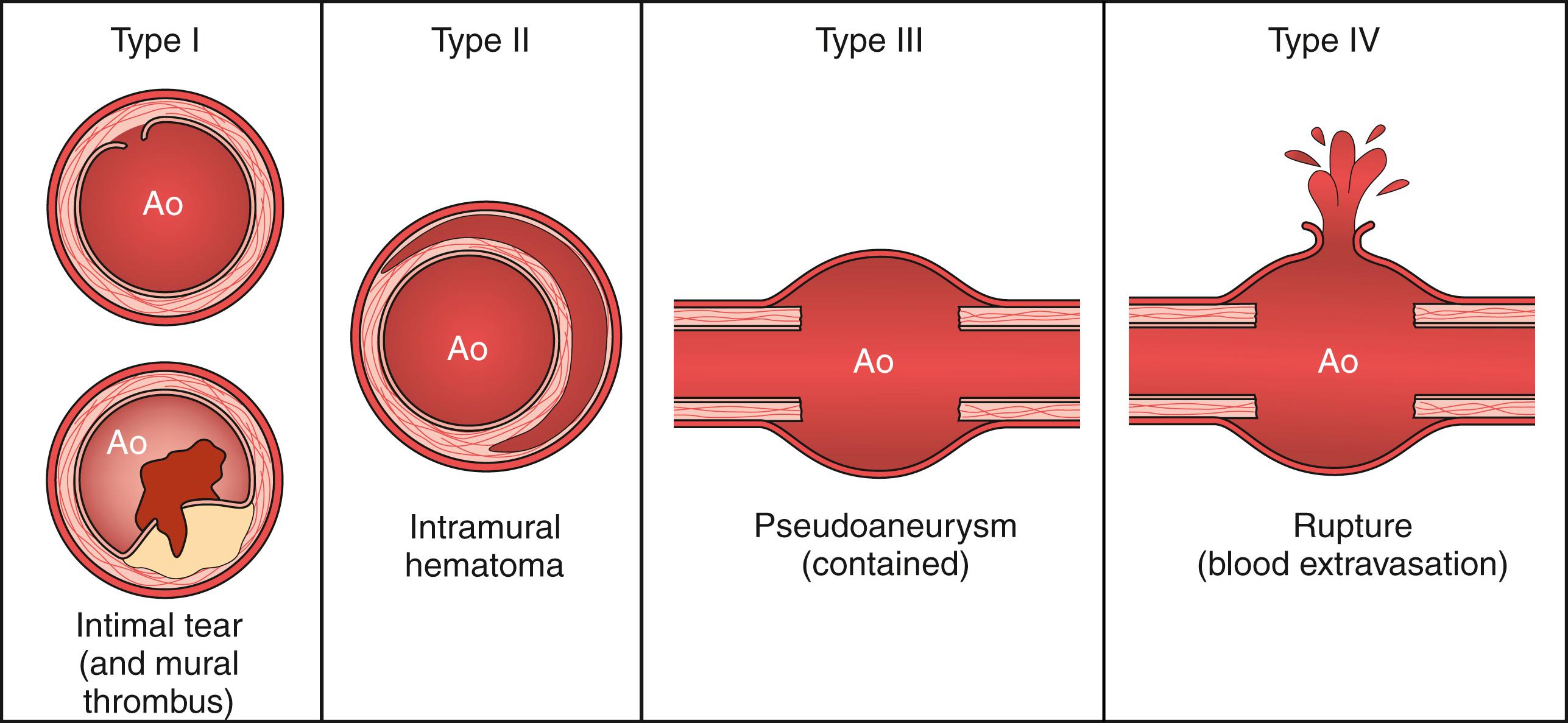Physical Address
304 North Cardinal St.
Dorchester Center, MA 02124
Blunt aortic trauma (BAT) is a life-threatening injury because most patients die at the scene, and delayed adventitial rupture may occur during hospitalization. Multiplane transesophageal echocardiography (TEE) and contrast-enhanced helical computed tomography (CT) have similar diagnostic accuracy for the identification of BAT that requires repair. , Historically, BAT constituted a surgical emergency to avoid lethal adventitial rupture. Progressively, delayed repair was proposed in specific patients, and aortic stent grafting has supplanted conventional surgery. Subtle aortic injuries with spontaneous favorable outcome may also be encountered. ,
BAT involves the aortic isthmus in about 90% of the cases. This aortic segment is located between the origin of the left subclavian artery and the first intercostal arteries, where the mobile aortic arch becomes relatively fixed to the thoracic cage. During an abrupt deceleration (e.g., head-on collision, lateral impact, vertical deceleration), generated traction, rotation, and shearing forces act maximally in this region. BAT rarely involves other anatomic segments of the aorta in patients who reach the hospital alive. Direct aortic injury is uncommon. Because blunt cardiac injuries share the same pathophysiology, they may be associated with BAT.
The most common BAT type is contained disruptions involving the entire depth of intimal and medial layers. In this case, adventitia and surrounding tissues allow a temporary hemostasis. Because of the risk of lethal free rupture, timely diagnosis, rigorous blood pressure control, and rapid repair of contained BAT are widely advocated. , Traumatic aortic dissection and intramural hematoma are less frequent. Superficial aortic injuries solely involve the intimal layer. They are too small and superficial to exert an excess of pressure on the adventitial layer and therefore have a benign natural history. ,
A classification of BAT has been proposed : type I, intimal tear; type II, intramural hematoma; type III, pseudoaneurysm; and type IV, rupture. Type I injuries usually heal spontaneously, , whereas other types require correction. Exposed collagenous fibers by an intimal tear may constitute a nidus on which acute thrombus formation and related arterial embolism may occur ( Fig. 135.1 ). False aneurysm formation associated with types III and IV may be asymmetrical. Type IV injuries may lead to abrupt death if blood extravasation is not temporarily contained by adjacent anatomical structures.

BAT is usually diagnosed in individuals involved in high-velocity motor vehicle crashes or falls from heights or in pedestrians hit by motor vehicles. Patients sustaining a BAT frequently fail to exhibit external signs of direct chest wall injury but commonly present with severe multisystem trauma. , Among described radiographic findings, the presence of a widened mediastinum is most frequently sought on clinical grounds to suspect BAT. Nevertheless, an apparently unremarkable mediastinal contour does not exclude the presence of an underlying BAT. , Accordingly, no clinical or radiographic sign is accurate enough to efficiently identify patients presenting with a BAT. Indicators suggestive of high-energy impact to the body can be used to select high-risk patients who should undergo additional work-up to confidently exclude a BAT ( Table 135.1 ).
|
Become a Clinical Tree membership for Full access and enjoy Unlimited articles
If you are a member. Log in here